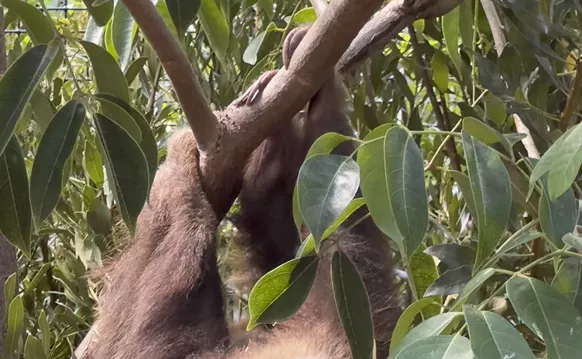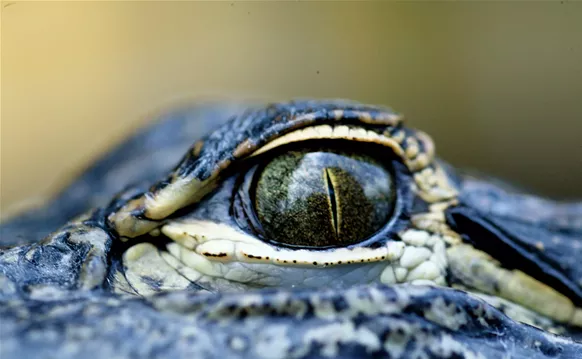The first thing to say about Rogue One is that it might be the most visually splendid Star Wars movie to date — with its mist-covered mountains, its tsunamis of dust and fire, its X-wing fighters blazing through rainswept nights. I’ve never been a big fan of director Gareth Edwards (Monsters, Godzilla), but the man certainly has an eye, and he presents us here with fully-realized worlds often captivating in their beauty.
The second thing to say about Rogue One is that, for all its vivid visual imagination, the film left me almost totally cold. And I say that as a man who has cried actual tears at more than one Star Wars movie.
As everyone’s probably heard by now, this entry has been positioned as a prequelish one-off about the efforts to steal the plans for the first Death Star — a premise that fits snugly between Episodes 3 and 4 but which largely avoids the soap opera of the Skywalker family (though several characters from other Star Wars films make notable appearances). This time, we follow loner outlaw Jyn Erso (Felicity Jones), whose brilliant scientist father (Mads Mikkelsen) was taken from her years ago by Imperial official Orson Krennic (Ben Mendelsohn) to work on the Empire’s new “planet killer” space station. Jyn was then rescued and mentored by the militant guerrilla Saw Gerrera (Forest Whitaker), an extremist too extreme for the Rebel Alliance.
Now actively avoiding politics after falling out with Saw years ago, Jyn is tracked down by the rebels after Imperial defector Bodhi Rook (Riz Ahmed) brings a secret message from her father revealing a vulnerability in the Death Star. But they still need the actual plans to the space station, and so Jyn heads off, aided and accompanied by Bodhi, legendary spy Cassian Andor (Diego Luna), and his wisecracking droid co-pilot K-2SO (Alan Tudyk). Also tagging along are blind monk Chirrut Imwe (played by Hong Kong superstar Donnie Yen), who is obsessively dedicated to the Force, and his faithful, armed companion – seriously, “faithful” and “armed” about covers the role – Baze Malbus, played by Jiang Wen, who also happens to be one of China’s greatest directors and most beloved actors.
I’m simplifying a bit here, both to avoid overt spoilers and also because the film is built around a series of breakneck battles and escapes, all of which establish a sense that important things are happening, even if they don't add up to much. Not unlike a videogame, each setpiece seems designed to get us one step closer to an outcome that is already little in doubt. First you get to the secret lair, then you get the message, then you get to the other lair, and you get the plans, then you get to the switch so you can transmit the plans, and so on.
Even as he occasionally pulls away to take in the majesty of his surroundings, Edwards often keeps his camera close to the action, and it can be fun seeing a Star Wars movie shot ground-level and rough, but the novelty wears off. In previous films, the shootouts and the chases and the dogfights often came with their own mini-narratives; think of all the times when characters had to master powers and weapons previously unfamiliar to them. That did more than keep the scenes interesting; it allowed character to develop through action, and stirred our investment in the heroes’ fates. Here, aside from a couple of exceptions, it’s all blunt-force shooting, flying, and fighting. Nobody discovers themselves, and we don't discover much, either.
The character work is dutiful rather than inspired. A general feeling of suspicion pervades the film: Jyn distrusts Cassian, who in turn distrusts her, while Saw distrusts everybody; even the Rebel Alliance leaders refuse to believe their own spies. If only Edwards (and co-writer Tony Gilroy, who was reportedly brought in for extensive reshoots) had found a way to weave all that into a deeper sense of paranoia — the kind one might find in the World War II mission movies that Rogue One references so fondly. Meanwhile, Cassian and Bodhi both speak of having to make up for past sins, in the kind of facile redemption narrative that’s so commonplace in modern action movies. But we don’t really see what they’re atoning for, so we never quite feel their need.
Still, bright spots persist in the otherwise humdrum script: Tudyk’s mouthy K-2SO, a reprogrammed Imperial droid, gets the best lines, and his imposing size and great strength are fresh after all the wimpy robots of past Star Wars entries. Krennic, the man building the Death Star, makes for a fascinating villain: He’s not so much a sneering, power-hungry fascist as he is a true believer who thinks the Empire really will bring peace to the galaxy — just as soon as it obliterates a few planets. Forest Whitaker’s Saw Gerrera, in just a few minutes, manages to be more touching than everyone who gets much more screen time. (Witness the heartbreak with which he asks Jyn, when they’re finally reunited, if she no longer considers him a friend; more of that please.) There’s also a tender bit of devotion between Chirrut and Baze, though much of it is too little, too late.
Rogue One moves swiftly enough, so it’s never boring. But why is it all so bloodless, so rote — especially when, visually, its surfaces are so lived-in and alive? The script offers a lot of protestations of feeling, but little actual evidence of such: It all seems rushed, as if speed will help make up for the lack of sincerity. (The original Star Wars films were also pretty fast, of course, but George Lucas and his lieutenants were always happy to slow things down for earnest sentiment, a power they used for both good and ill.) It’s a shame, because Rogue One's creators clearly want to move us deeply — several major plot developments should pack an overwhelming emotional wallop — but they haven’t given this talented cast enough to work with. It’s fast, loud, even lovely — and not terribly engaging.
Rogue One: A Star Wars Story
Starring Felicity Jones, Diego Luna, Ben Mendelsohn, Donnie Yen, Jiang Wen, Forest Whitaker, and Mads Mikkelsen. Directed by Gareth Edwards. Written by George Lucas and Chris Weitz. Rated PG-13. 133 minutes. Opens wide Friday, December 16.

Audio By Carbonatix
[
{
"name": "GPT - Billboard - Slot Inline - Content - Labeled - No Desktop",
"component": "16971022",
"insertPoint": "2",
"requiredCountToDisplay": "2"
},{
"name": "STN Player - Float - Mobile Only ",
"component": "18617832",
"insertPoint": "2",
"requiredCountToDisplay": "2"
},{
"name": "Editor Picks",
"component": "15769925",
"insertPoint": "4",
"requiredCountToDisplay": "1"
},{
"name": "Inline Links",
"component": "16575154",
"insertPoint": "8th",
"startingPoint": 8,
"requiredCountToDisplay": "7",
"maxInsertions": 25
},{
"name": "GPT - Rectangle 2x - Slot Auto-select - Labeled",
"component": "15782206",
"insertPoint": "8th",
"startingPoint": 8,
"requiredCountToDisplay": "7",
"maxInsertions": 25
},{
"name": "Inline Links",
"component": "16575154",
"insertPoint": "8th",
"startingPoint": 12,
"requiredCountToDisplay": "11",
"maxInsertions": 25
},{
"name": "GPT - Leaderboard to Tower - Slot Auto-select - Labeled",
"component": "15782207",
"insertPoint": "8th",
"startingPoint": 12,
"requiredCountToDisplay": "11",
"maxInsertions": 25
}
]





